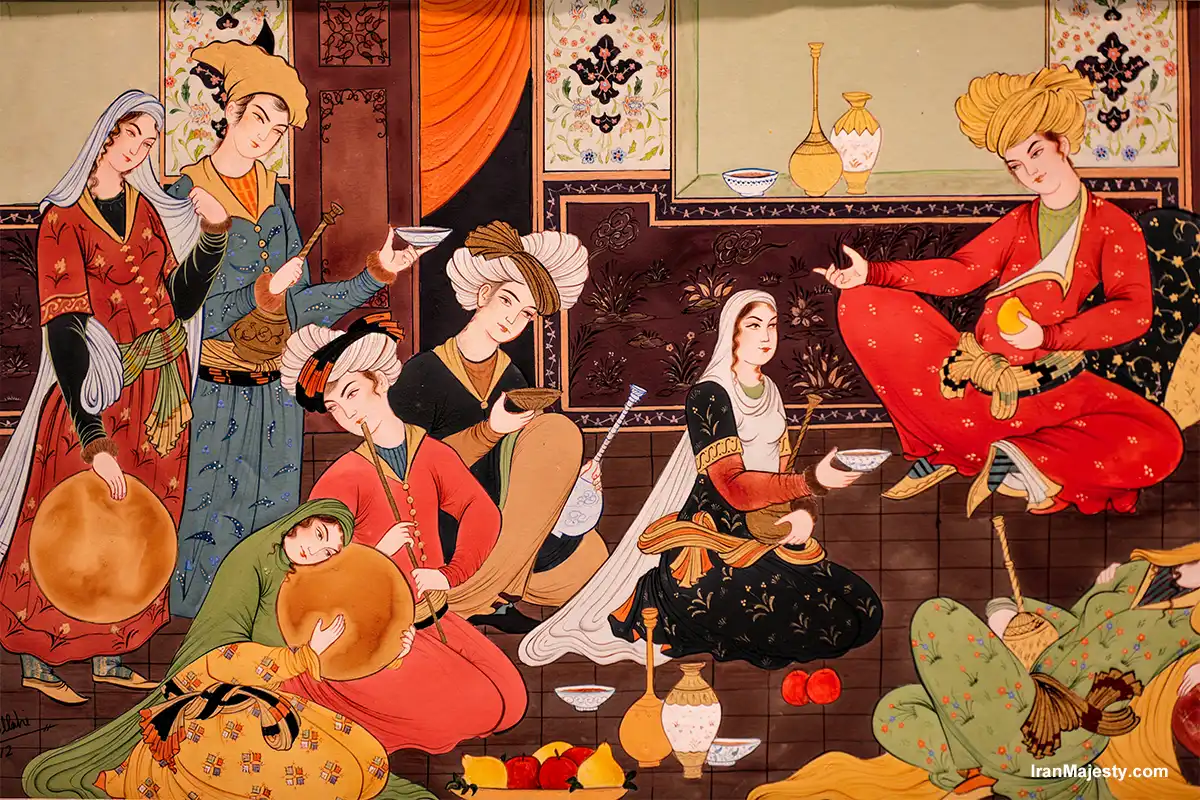Persian culture, with its roots in ancient Iran, has left an indelible mark on global heritage through contributions to art, architecture, philosophy, literature, and science. Persian civilization has flourished for thousands of years, spreading its influence across Asia, Europe, and the Middle East. Today, many aspects of Persian culture continue to shape and inspire art, literature, and philosophy worldwide.
Let’s dive into the lasting global impact of Persian culture, exploring its influence on everything from architecture to language, and why it remains significant in the modern world.
Persian Art and Architecture
Persian art and architecture are among the most recognizable legacies of Iranian culture. With distinctive features like intricate tile work, symmetrical gardens, domes, and grand palaces, Persian architectural elements can be found in historic buildings across the world, especially in regions like Central Asia, the Middle East, and parts of India.
One of the most iconic contributions of Persian culture to architecture is the Persian garden. Characterized by its charbagh (four-part) layout and use of water channels, Persian gardens symbolize the paradise concept. These gardens influenced the design of famous sites like Taj Mahal gardens in India and Alhambra in Spain. The UNESCO-recognized Persian garden tradition continues to inspire contemporary landscape architecture, emphasizing harmony with nature and aesthetic beauty
Key Architectural Contributions:
- Domed structures: Persian domes, seen in mosques and palaces, influenced Islamic architecture in Turkey, India, and North Africa.
- Tile mosaics: The beautiful mosaic tilework in blue and turquoise is emblematic of Persian craftsmanship, visible in places like Samarkand, Istanbul, and Lahore.
- Minarets and Iwans: The tall minarets and large iwans (vaulted halls) are features found in Iranian mosques that have been widely adopted in Islamic architecture.
Literature and Poetry: The Voice of Persia
Persian literature, particularly poetry, has had a profound influence on global literary traditions. Poets like Rumi, Hafez, Ferdowsi, and Omar Khayyam are celebrated not only in Iran but also worldwide. Persian poetry delves into themes of love, mysticism, and human connection, resonating with audiences of all backgrounds.
- Rumi’s Mystical Poetry: Known for his writings on love and the divine, Rumi’s work has been translated into multiple languages, making him one of the best-selling poets in the United States. His messages of unity, compassion, and love are celebrated universally.
- Ferdowsi’s Shahnameh: Ferdowsi’s Shahnameh, or The Book of Kings, is one of the most important works of Persian literature, recounting ancient Persian history and mythology. This epic influenced literary traditions in Central Asia and the Middle East, preserving Persian identity and language through centuries of foreign influence.
Persian literature’s emphasis on love, introspection, and spirituality has inspired writers and poets across different cultures and continues to do so today. Western authors, including Ralph Waldo Emerson, have drawn inspiration from Persian mysticism and philosophy.
“We’re excited to share this valuable video by Xerxes of Persia on Persian Art and Architecture. It offers visual insights that complement our discussion, with credit going to the original creator.”

Persian Philosophy and Science
Persian scholars made significant contributions to philosophy, medicine, mathematics, and astronomy, particularly during the Islamic Golden Age. Notable Persian thinkers, like Avicenna (Ibn Sina) and Al-Farabi, laid the foundation for advancements in various scientific fields, influencing both Eastern and Western traditions.
- Avicenna: Known as the “father of early modern medicine,” Avicenna’s medical texts, particularly The Canon of Medicine, were used in European and Islamic medical schools for centuries. His work on logic and metaphysics also influenced Western philosophy and laid the groundwork for further scientific exploration.
- Omar Khayyam: Apart from being a poet, Khayyam was a mathematician and astronomer who contributed to the development of algebra and the refinement of the Persian calendar, one of the most accurate calendars in the world.
Persian intellectual achievements set the stage for the Renaissance in Europe by preserving and expanding on classical Greek knowledge. Through the translation movement, Persian scholars helped transmit this knowledge, making it accessible to future generations around the world.
Language and the Persian Influence
The Persian language, also known as Farsi, is one of the oldest languages still in use today. Persian has influenced many languages across the Middle East, Central Asia, and South Asia. Due to Persia’s cultural prominence, Farsi words have been incorporated into languages such as Urdu, Turkish, and Arabic. For instance, Urdu poetry and literature are heavily inspired by Persian themes and vocabulary.
The spread of Persian as a literary and administrative language during various Persian empires allowed for the sharing of ideas and culture across vast regions. Persian literature and terminology played an essential role in developing literary traditions in India, Pakistan, and Afghanistan, where Farsi was once the language of administration and culture.
Persian Festivals and Traditions
Iran’s cultural heritage is also preserved and celebrated through its festivals and traditions. One of the most famous Persian festivals is Nowruz, the Persian New Year, which has been celebrated for over 3,000 years. Nowruz, recognized by UNESCO as part of the Intangible Cultural Heritage of Humanity, marks the arrival of spring and symbolizes renewal, joy, and harmony.
Nowruz is celebrated by millions of people in Iran and across countries such as Afghanistan, Tajikistan, Azerbaijan, and even parts of the Balkans. Its rituals, including the Haft-Seen table, have become symbols of Persian identity and cultural continuity. This festival has even found its way into Western awareness, with celebrations in cities like New York and Toronto.
Why Explore Persian Culture?
Persian culture offers a rich tapestry of history, art, literature, and philosophy that continues to inspire people worldwide. For travelers, visiting Iran allows for an immersive experience in this influential culture, from the beautiful Persian architecture to the deep-rooted traditions that make Persian culture unique.
Whether exploring the breathtaking tilework of Isfahan’s mosques, reading the profound poetry of Rumi, or learning about the remarkable scientific achievements of Persian scholars, visitors will find countless reasons to appreciate and celebrate Iran’s heritage.
Interested in learning more about Persian culture? Leave a comment or ask questions below! If you enjoyed this article, share it with friends who might also be fascinated by the global impact of Persian heritage.


0 Comments